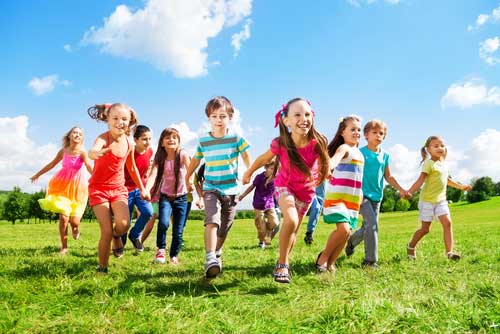Do kids have something to teach us about staying in shape? You might not think so based on the growing rates of childhood obesity, but there are a few things we can learn from young kids that can make our lives as adults healthier. Here are 5 things a child can teach you about health and fitness.
Young Kids Are Perpetual Motion Machines
Have you ever stopped to watch young kids in a public place? They’re perpetually in motion. Children take the concept of NEAT (non-exercise adaptive thermogenesis) to a whole new level. When kids stand in line with their parents, they’re constantly moving their arms and legs as they twist, turn and bounce around. That’s a good thing from a health and weight control perspective.
Research in adults shows NEAT, movements you do when you’re not formally exercising, can add up to significant energy expenditure over the course of a day. All of those extraneous movements you might not think about like tapping your fingers and shaking your legs count. In fact, you can burn up to 300 additional calories each day just by fidgeting more and incorporating more unplanned, “wasted” movements into your day. NEAT is a contributor to total energy expenditure and doing more of it helps with weight control.
To kids, NEAT comes easily. Young kids are natural fidgeters and burn tons of calories as wasted energy during in a 24-hour period. Such inefficiencies can be beneficial to adults too. Take-home point: Train yourself to move around more throughout the day. It may take conscious effort at first, but over time it’s something you learn to do without thinking about it.
Take Time to “Play” Throughout the Day
Kids are unrestrained in their movements. Their philosophy is simple. Why walk when you can run? A young child might take off at any moment at a vigorous pace comparable to a high-intensity interval. High-intensity exercise is something they naturally do and they enjoy every minute of it. So should you.
Kids don’t exercise because they have to – they do it because they want to. Wouldn’t it be nice if more adults had that attitude? Take-home point: Next time you’re not looking forward to a workout, think of it as play rather than exercise. Then add more bursts of “playful” activity into your day. Skip the elevator, and bound up the stairs. Don’t walk through the parking lot – pick up the pace and run. Become conscious of unplanned opportunities to add play to your life. It’s a good stress reliever too.
Kids Don’t Like to Sit
What young child enjoys sitting in a chair? Not many. Somewhere along the way, sitting becomes more appealing. By the time a child reaches adulthood, the perpetual motion slows down and they spend more time perched in a chair than they do on their feet. That’s bad news from a health perspective. A number of studies show more time spent sitting is linked with a greater risk for health problems including heart disease and premature mortality. Kids have the right idea – they never stop moving and sit only with reluctance. Take home point: Think like a child and find more reasons to get up out of your chair and move around during the day. Learn to enjoy NOT sitting. At the very least, be aware when you’ve been sitting too long and get up and move.
Kids Think Exercise is a Privilege
Young kids beg to go outside and run and play. Exercise for them is something they long to do, not something they have to do. According to an article published in the New York Times, kids actively move around about 3 hours a day at age 9. Unfortunately, by the age of 15, the amount of physical activity they do drops to only 30 minutes a day. How much healthier we’d be if we continued to think of exercise as fun beyond the early childhood years. Take home point: Take a lesson from a child. Think of exercise as a privilege rather than something you HAVE to do. Vary your workouts so your mind and body are constantly stimulated in new ways. Get back in touch with your “inner child” and stop seeing exercise as work and an obligation.
Stop Eating When You’re Full
Kids may not always make the healthiest dietary choices but most children stop eating when they’re full. Some people lose the ability to do that as they grow into adults. Eating becomes a form of entertainment and a way to deal with stress. Kids have a natural ability to self-regulate how much they eat and respond to cues that they’re full. As adults, we sometimes lose touch with what our bodies are telling us. Take home point: Learn to listen to your body like a child does. It may take conscious effort at first to recognize when you’re satiated but you’ll become better at it with practice. When you’re eating a meal, stop and assess your level of hunger. Children don’t feel obligated to clean their plate and neither should you.
The Bottom Line
Young kids have a few things to teach us about fitness and weight control. When it comes to exercise, learn to think like a child again!
References:
U.S. News and World Report. “3 Healthy Habits from Toddlerhood worth Reinstating” November 11, 2014.
Best Pract Res Clin Endocrinol Metab. 2002 Dec;16(4):679-702.
Harvard Health Publications. “Too Much Sitting Linked to an Early Death” January 2014.
New York Times. “As Children Grow, Activity Quickly Slows” July 2008.
Related Articles By Cathe:
Physical Inactivity or Obesity: Which is the Bigger Health Threat?
Why Most People Don’t Exercise – and It’s Not Lack of Time


